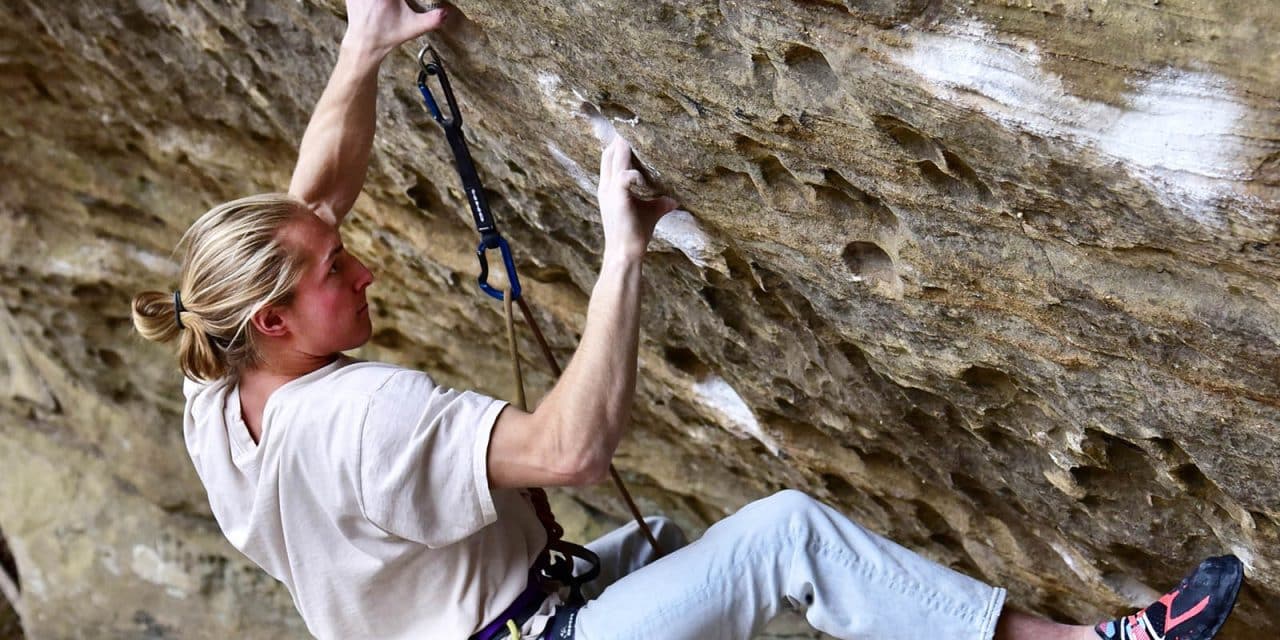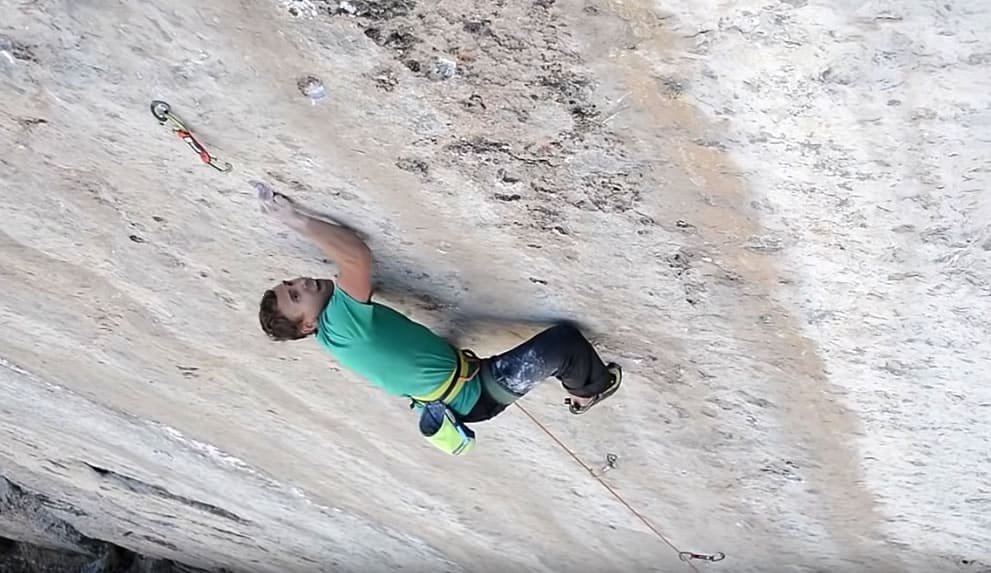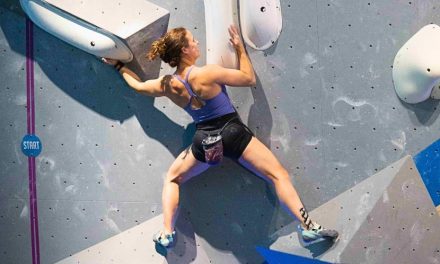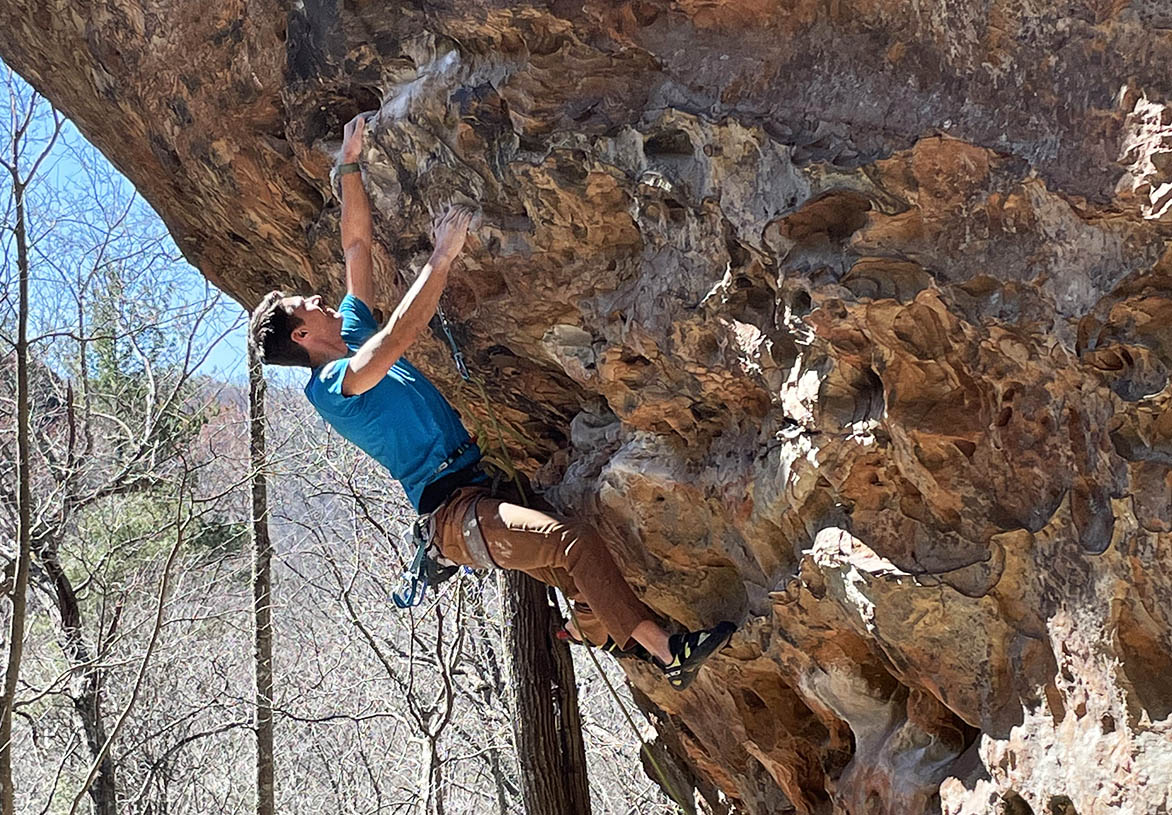Learn everything you need to know about climbing chalk types, friction, and optimizing your grip on the rock!
The quality of your contact with the rock is paramount when it comes to climbing performance. Strong muscles, on-point technique, and a confident mindset won’t get you up a climb if you can’t hang onto the holds!
Many things affect the quality of your grip and the perceived “stickiness” of the holds – to begin with, there’s the texture of the rock and the degree of incut (or slope) to the hold. Weather conditions, such as temperature, humidity, and wind play a big role in how the rock feels and your skin performs. Body position, center of gravity location, and your finger force vector are huge factors in determining how holds feel and will work for a given move. Last but not least, there’s your skin quality and the structure of your fingertips. Pulpy (fleshy) tips can deform around tiny rock rugosities to give a better grip on tiny holds and, similarly, skin that’s got adequate moisture and elasticity will stick to holds better than thick, dry, callused skin which yields a glassy and slippery grip.
It’s the latter topic of skin quality and specifically chalk-use to optimize grip that we’ll explore today. To help shed some light on this topic, I’ve got Kevin Brown, co-founder and CEO of Friction Labs chalk, to download on us some of the science of chalk and skin performance.
So lean in and chalk up for this grip-enhancing episode of the T4C podcast!
LISTEN NOW
RUNDOWN
0:15 – Intro to skin performance and grip–what things affect the quality of your grip?
3:00 – Overview of chalk and the role of “dryness”.
6:00 – The effect of humidity, personal skin quality, and chalk use as it relates to skin wear and climbing performance.
8:35 – Use of Collagen powder supplements to improve skin elasticity, strength, and recovery of damaged skin.
9:20 – Importance of making quality efforts on skin-hard boulders and routes–save skin by making just a few quality attempts over many quick, low-quality attempts.
10:00 – Are all chalks basically the same? Kevin reveals the vast differences in chalk formulations!
14:00 – What’s the optimal amount of chalk to have on your fingers?
16:30 – How chalk products on the market vary. Are added drying agents helpful?
19:30 – Common contaminants in chalk…and how they adversely affect grip.
21:10 – The genesis of Friction Labs…and new product development.
22:00 – The utility of liquid chalks–who will benefit from it and how to use it for optimal skin performance while climbing.
24:00 – Difference uses of alcohol-containing chalk versus alcohol-free liquid chalk.
25:00 – Is “drier always better”? What are the pros and cons of various drying agents such as Dry Hands, Carpe, AntiHydral, etc.
28:00 – The importance of developing a personalized skin-care routine… Tips on washing chalk off skin after climbing…and moisturizing skin.
31:00 – How to dry out your chalk…if it gets wet from rain…or deep water soloing.
31:35 – Responsible use of chalk, tick marks, brushing practices, etc.
35:50 – Closing comments and coupon codes
*** Friction Labs special offer for T4C podcast listeners (value through April 2024) — Save 15% at FrictionLabs.com with checkout code: T4C15 ***
Support the TFC podcast sponsor, PhysiVantage Nutrition. Get 15% off full-priced nutrition with checkout code: PODCAST15 (North America only). In Europe and elsewhere visit EPIC-TV Shop or BananaFingers.com to get your PhysiVantage!
Music by Misty Murphy
SAVE on La Sportiva shoes here >>
Thank you! La Sportiva, Maxim Ropes, DMM Climbing, Friction Labs
Follow Eric on Twitter @Train4Climbing
Check out Eric’s YouTube channel.
And on Instagram at: Training4Climbing
Copyright 2024 Eric Hörst | Horst Training, LLC.







![🚨New Training For Climbing podcast drop! [**Link in bio.**]
This a two-part deep dive into designing a comprehensive, long-term systems approach to training. Coach @eric_horst unpacks—in rich detail—how systems actually function, and he highlights how transformative climbers throughout history “shake up the box” with innovative, highly effective methods to achieve big goals and push the boundaries of our sport.
In Part 1 (#122), Eric blends a concise climbing history lesson with an engineer-like breakdown of how intelligent systems operate. Part 2 (#123) of this series will deliver the actionable strategies you can use to build a personalized, high-performance training system for this winter…and for many seasons to come.
Eric emphasizes that as climbers progress beyond the beginner stage, climbing and training grow increasingly complex—requiring intentional, organized, and year-round development of strength, technique, mental skills, recovery habits, nutrition, and lifestyle management. Rather than ad-lib sessions or singular-focus programs (like only training strength), climbers need a comprehensive system fine-tuned daily and seasonally.
This is an entertaining and thought-provoking episode—so lean in, listen closely, and get ready to feel inspired, challenged, and equipped to level-up your modus operandi at the crag, in the gym, at home, and in everything you do! Listen on Apple Podcasts, Spotify, or online using the web player below.
#climbingtraining #bouldering #indoorclimbing #climbing #climbingpodcast #erichorst #trainingforclimbing @lasportivana @physivantage](https://trainingforclimbing.com/wp-content/plugins/instagram-feed/img/placeholder.png)


